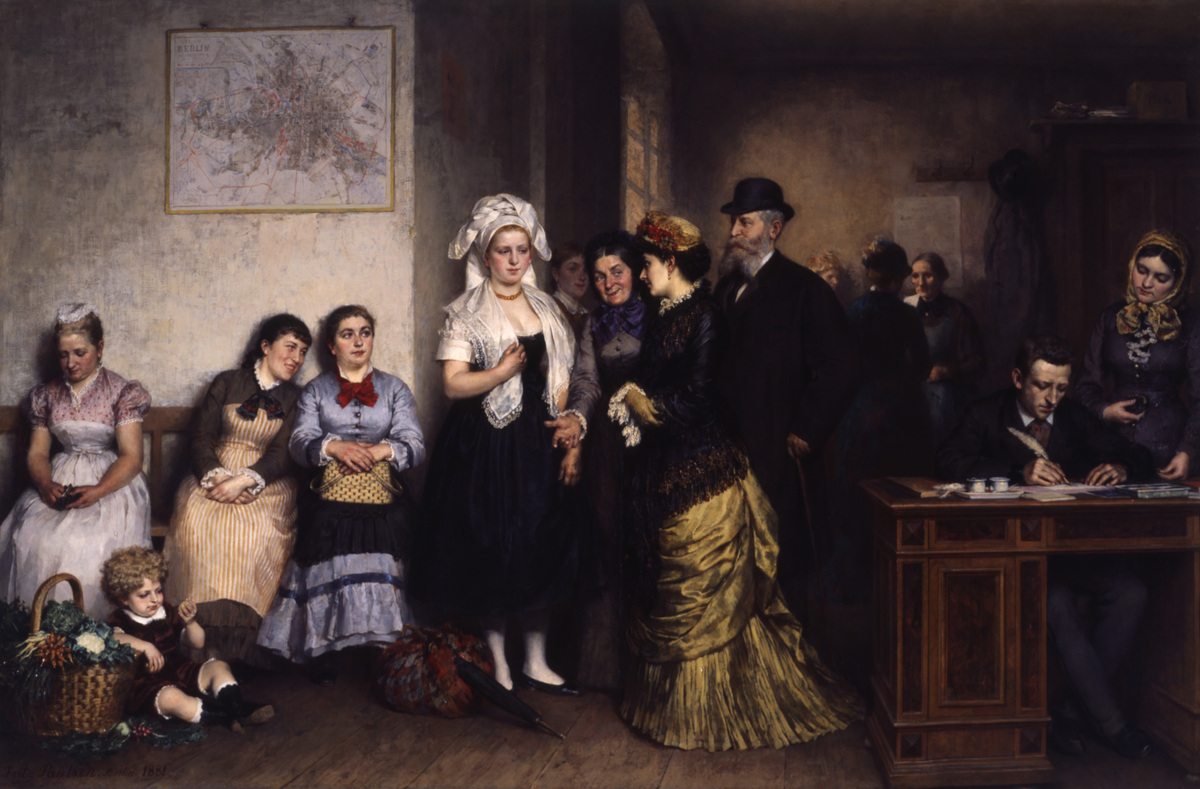Source

Source: Fritz Paulsen, Bei der Stellenvermittlung oder Gesinde-Vermiethungsbureau [At the Employment Agency or Servants’ Bureau]. Oil painting (1881). Deutsches Historisches Museum, Berlin, Inventar-Nr.: 1988/85.
In 1880, Berlin alone had 460 servants’ bureaus like the one pictured here. These agencies provided well-off burghers and members of the aristocracy with their household staffs—domestic servants, cooks, nannies, and cleaners. For many young, single women, these types of positions represented the only way to escape from farms and small villages and move to the big city: often, they were met at the train station by agents of the various bureaus. Wet nurses also became a status symbol for prosperous Berlin families (in 1885, 3 percent of nursing infants had wet nurses.) These families were particularly keen to secure wet nurses from the Spreewald—a relatively isolated area crisscrossed by canals, lying between Berlin and Dresden. This romanticized painting by Fritz Paulsen (1838–1898) depicts an upper-middle-class couple considering the suitability of one such a woman, whose costume identifies her as coming from the Spreewald. The sly expression on the face of the female intermediary contrasts interestingly with the apparent unworldliness of the prospective employee. The division between city and countryside is further underscored by the painting’s formal and compositional elements: rendered in darker hues, the right half of the canvas (complete with the upper-class hats in the background) symbolizes the city, whereas the left side, with its overflowing basket of vegetables and well-fed child, suggests the bounty of the countryside. Written accounts by female servants provide evidence of the various forms of exploitation that often followed the signing of a labor contract, including abysmally low pay and sexual predation.

Source: Fritz Paulsen, Bei der Stellenvermittlung oder Gesinde-Vermiethungsbureau [At the Employment Agency or Servants’ Bureau]. Oil painting (1881). Deutsches Historisches Museum, Berlin, Inventar-Nr.: 1988/85.
© Deutsches Historisches Museum, Berlin